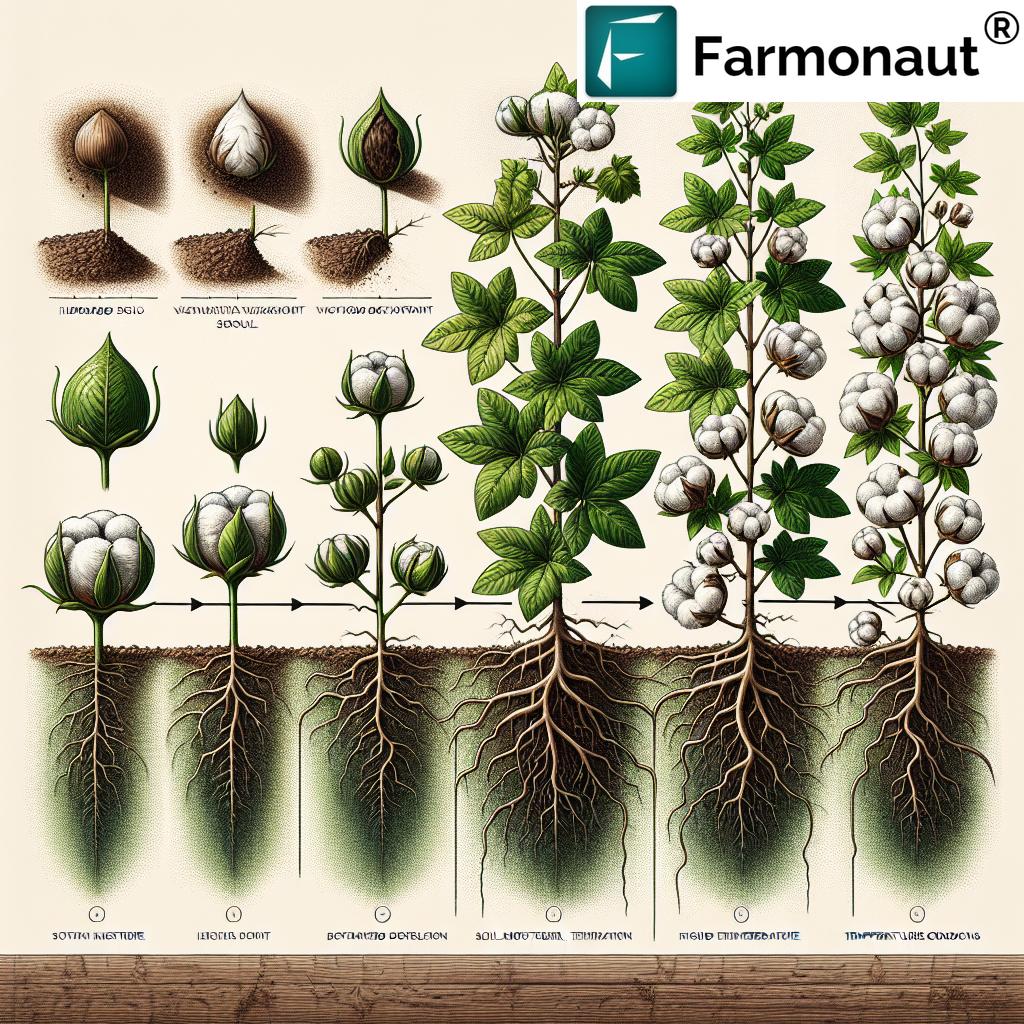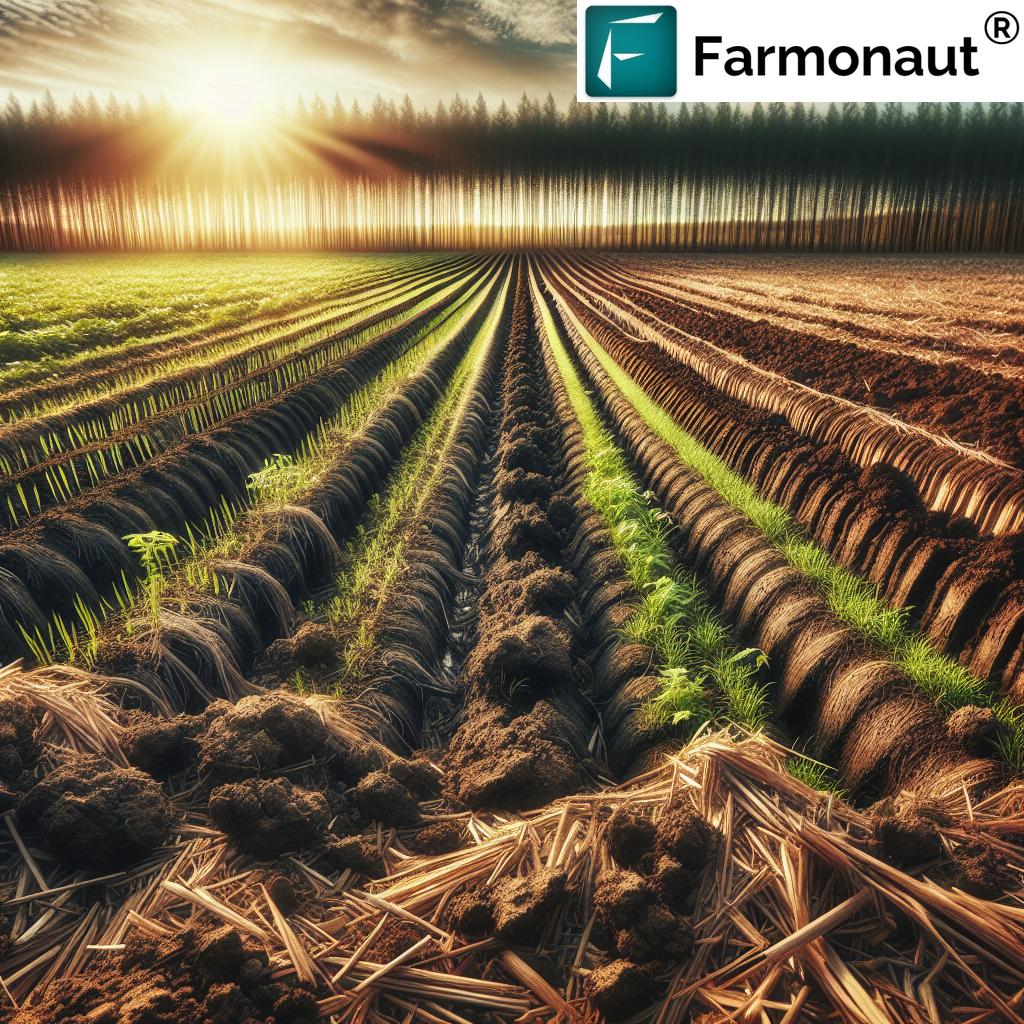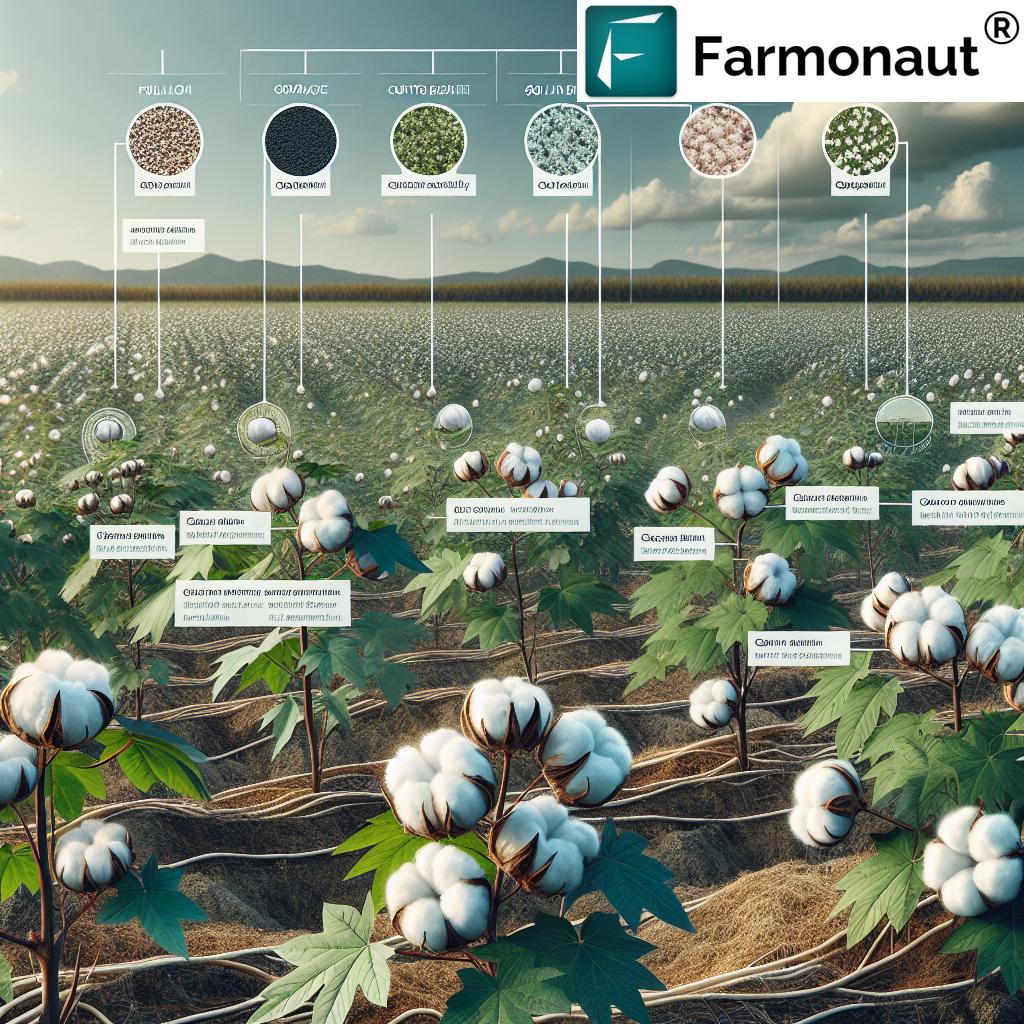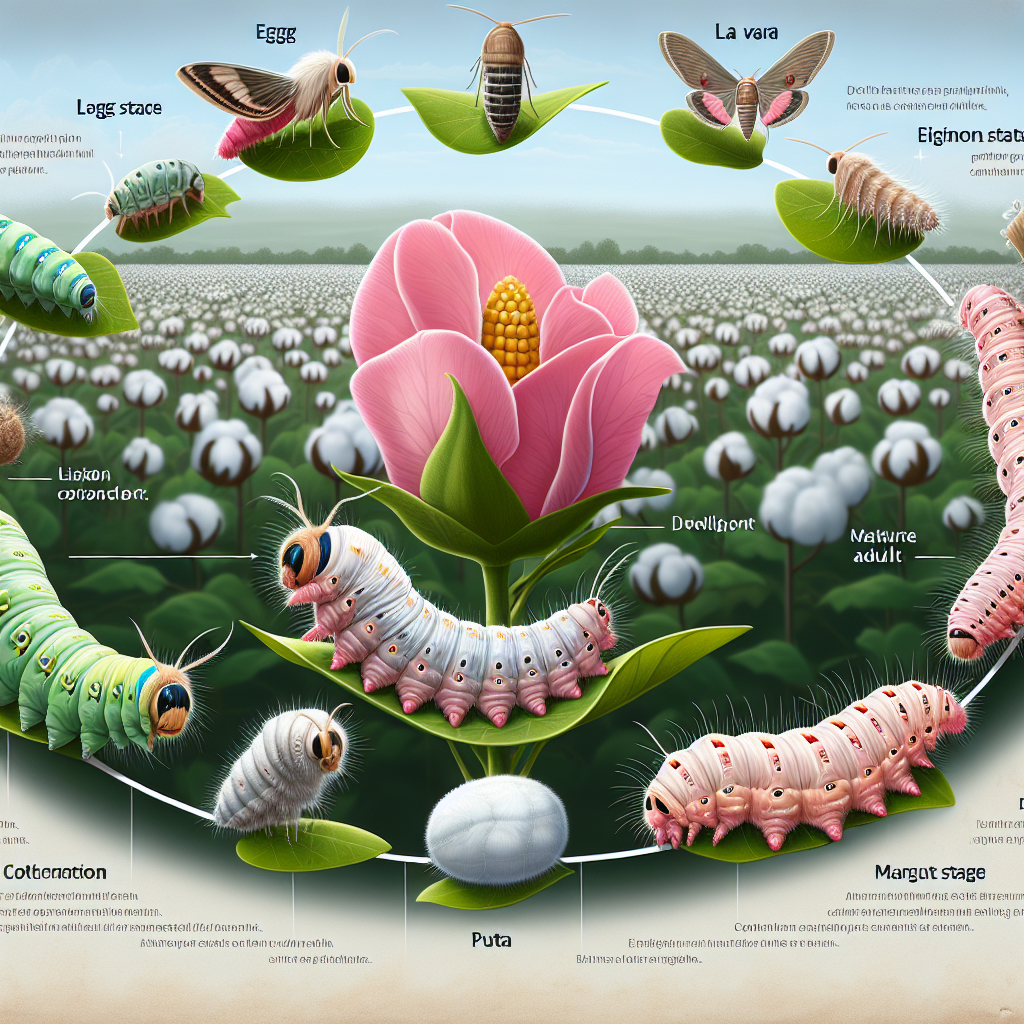Best Orchid Fertilizer & Compost for Breeding & Hydroponics in 2025
Summary: Orchid Cultivation in 2025 — Best Practices for Fertilizer, Compost, and Breeding Techniques
Orchids, renowned for their delicate beauty and ecological significance, are rising stars in global horticulture and commercial agriculture. As the demand for orchids in floriculture and landscaping rises, effective nutrient management, sustainable fertilizer use, innovative breeding techniques, and state-of-the-art hydroponic systems are key to successful orchid cultivation. This article focuses on the best orchid fertilizer, tailored composts, and hydroponic orchid pots — with a special spotlight on organic cow fertilizer and contemporary breeding and growing practices for 2026 and beyond.
Table of Contents
- Modern Orchid Cultivation: An Overview for 2025
- Optimizing Fertilizer Use for Orchids: A Science-Based Approach
- Comparing the Best Orchid Fertilizer & Compost Products
- The Role of Orchid Compost in 2025: Trends & Sustainable Blends
- Advancements in Orchid Breeding Techniques for Commercial Success
- Hydroponic Orchid Cultivation: Techniques & Trends
- Integrating Organic Cow Fertilizer in Orchid Farming
- Farmonaut: Smart Technology for Orchid Cultivation in 2025
- Frequently Asked Questions: Orchid Fertilizer, Compost, Hydroponics & Breeding
- Conclusion: The Best Orchid Fertilizer & Practices for the Years Ahead
Modern Orchid Cultivation: An Overview for 2025
The focus on orchid fertilizer and compost selection in 2025 reflects an evolution in orchid breeding, farming, and hydroponic systems. As orchids become central to floriculture, landscaping, and commercial agriculture, achieving greater blooms, resilience, and sustainability demands optimized fertilizer use, advanced compost amendments, and precision management of hydroponic orchid pots.
The future is marked by innovative fertilizer formulations, eco-friendly substrates like pine bark and coconut husk, and the integration of organic cow fertilizer for moisture retention, nutrient uptake, and microbial activity. Digital solutions and data-driven monitoring platforms—such as those from Farmonaut—also rise in importance for supporting the sustainability and efficiency of orchid cultivation.
Optimizing Fertilizer Use for Orchids: A Science-Based Approach
Understanding Orchid Nutrient Requirements
Orchids are epiphytic or terrestrial plants, thriving in environments rich in decomposing forest litter or mossy substrates. Their growth habits and nutrient needs differ greatly from conventional crops. Unlike heavy feeders such as tomatoes or corn, orchids are gentle feeders—they require balanced, low-dose, and slow-release fertilizer applications to mimic natural nutrient uptake.
- Epiphytic orchids (e.g., Phalaenopsis, Dendrobium) absorb nutrients from moisture and organic matter on tree bark.
- Terrestrial orchids (e.g., Cymbidium, Paphiopedilum) grow in forest floors with decaying leaves and rich microflora.
The best orchid fertilizer for 2025 combines a balanced N-P-K formulation (usually around 20-20-20 or 15-10-15) with a full suite of essential micronutrients, including magnesium, calcium, iron, boron, and manganese.
Key Characteristics of the Best Orchid Fertilizer
- Low salt index: To avoid root burn in delicate orchid roots.
- Controlled release: Gentle, steady nutrition without spikes.
- Water soluble powders/liquids: For easy foliar or root feeding and even distribution.
- Micronutrient enrichment: Prevents common deficiencies and supports vital plant processes.
- Organic-based alternatives: Seaweed extracts and humic substances stimulate resilience and microbial diversity.
Why Use Organic Cow Fertilizer?
Cow fertilizer—including dung-based composts and liquid extracts—has gained popularity due to its:
- Slow-release characteristics: Steady nutrition1 for orchid roots.
- Microbial diversity: Supports beneficial fungi and bacteria in the substrate.
- Organic matter enrichment: Improves soil structure and moisture retention.
- Environmental safety: Reduces reliance on synthetic chemicals and mitigates pollution risks.
Thus, blending cow fertilizer into orchid substrates not only enhances growth and flower production but also supports sustainability goals in commercial agriculture for 2026 and beyond.
Modern Formulations and Application Techniques
- Regular foliar spraying: Ensures even and efficient nutrient absorption.
- Root drenching: Delivers fertilizer directly to the root zone in hydroponic or traditional systems.
- Timed-release feeding: Benefit of modern slow-release formulations for long-term care.
- Integration of microbial inoculants: Promotes a healthy root zone and disease suppression.
Tips for Optimizing Orchid Fertilizer Use (2025 & Beyond)
- Apply fertilizer when orchids are actively growing (new roots and leaves).
- Reduce feeding during winter or dormancy to avoid nutrient overload.
- Flush hydroponic systems or pots monthly to avoid salt buildup.
- Switch to bloom-focused formulas as flowering approaches (higher phosphorus).
- Alternate between organic and conventional feeds for maximum vigor and microbial health.
Comparing the Best Orchid Fertilizer & Compost Products for Breeding & Hydroponics
To help you select the best orchid fertilizer and compost for breeding and hydroponic production, here’s a comparative table spotlighting the most advanced and sustainable solutions on the market as of 2025.
| Product Name | Type | Recommended Application | NPK Ratio | Innovation Feature | Estimated Growth Improvement (%) | Approximate Cost* (per kg/liter) |
|---|---|---|---|---|---|---|
| OrchidPro 2025 Liquid Feed | Fertilizer (Liquid) | Both Breeding & Hydroponics | 20-20-20 + Micro | Instant uptake, micronutrient-enriched | 28% | $10 |
| EcoCow Compost Plus | Compost | Breeding, Pot Mix | 1-1-1 (slow, organic) | Cow-dung base, high microbial diversity | 22% | $7 |
| HydroBloom Solution X | Fertilizer (Water-Soluble) | Hydroponics | 10-11-20 + Micro | Low salt, slow-release, bioactive extracts | 30% | $12 |
| PureBark Mix Ultra | Compost (Specialty Mix) | Breeding, Potting | 1.5-0.5-2 (approx.) | Pine bark, coconut husk, biochar blend | 20% | $8 |
| CowGold Liquid Extract | Fertilizer (Liquid) | Both (Foliar/Hydroponic Additive) | 2-1-2 (organic, micronutrients) | Humic substances, seaweed-enriched | 24% | $9 |
| GreenRoot Hydro Mix | Compost (Inert Substrate) | Hydroponics (LECA Blend) | N/A (Inert + Microbe Inoculant) | LECA, bio-inoculated, moisture retention | 19% | $11 |
The Role of Orchid Compost in 2025: Trends & Sustainable Blends
Why Orchid Compost Differs from Standard Soil
Orchid compost is a specialized mix, unlike the soil used for most houseplants or crops. It provides:
- Excellent aeration
- Superior moisture retention
- High microbial activity
- Reduced compaction risk to prevent root suffocation
In 2025, common substrates for orchid pots include:
- Pine bark chips
- Coconut husk (coir or chips)
- Sphagnum moss
- Charcoal
- Perlite or pumice
- Biochar for microbial habitat enhancement
- Composted cow manure for organic matter and nutrition
Modern Trends: Eco-Friendly, Microbial-Rich Composts
- Incorporating organic amendments such as cow fertilizer and biochar for water retention and nutrient cycling.
- Using microbial inoculants derived from liquid cow manure for better root–fungus symbiosis.
- Favoring sustainable sources: By 2025, more than 70% of advanced compost mixes are derived from renewable or recycled materials.
Such orchid composts not only stimulate growth but reduce fertilizer dependency, cut costs, and support climate-smart agriculture.
DIY Sustainable Orchid Compost: Best Practices
- Blend pine bark and coconut husk chips for an airy base.
- Mix in biochar (activated charcoal) to enhance microbial habitats.
- Add aged cow manure compost at up to 10% by volume for slow-release nutrition.
- Optionally, inoculate with liquid cow manure extracts to boost root health.
Tip: Always use fully composted manure—fresh manure can burn orchid roots or introduce pathogens!
Immediate Benefits for Orchid Growth
- Improved root vigor and orchid bloom quality
- Reduced disease risk due to active microbial communities
- Greater drought resilience from enhanced moisture retention
- Lower environmental impact compared to synthetic amendments
Advancements in Orchid Breeding Techniques for Commercial Success
Rising demand for orchids has driven a renaissance in orchid breeding. Commercial breeding initiatives in 2025 emphasize adaptability, disease resistance, and nutrient efficiency, all directly influenced by improved fertilizer and compost use.
Innovative Breeding Tools and Methods
- Molecular marker-assisted selection: DNA markers enable breeders to select desirable traits (like drought tolerance or enhanced vigor) earlier and faster.
- Hybridization: Combining classic cross-pollination with laboratory techniques delivers broad genetic diversity and market-desired flowers.
- Tissue culture & meristem propagation: Mass multiplication of elite lines to meet global commercial demand. This ensures uniformity and disease-free stock.
- Trait-focused breeding: Orchids bred for improved nutrient utilization thrive with lower fertilizer input—supporting sustainable agriculture.
Examples of In-Demand Traits (2025 & Beyond)
- Intense, long-lasting flower color and structure
- Low nutrient and water needs (eco-conscious breeding)
- Enhanced root health and resistance to substrate pathogens
- Faster flowering cycles for commercial hydroponic operations
Tip for Breeders: Integrate hydroponic test phases in breeding programs to develop cultivars optimized for soilless, water-efficient, and containerized orchid farming.
Hydroponic Orchid Cultivation: Techniques & Trends
How Do Hydroponic Orchid Pots Work?
- Inert substrates like LECA (lightweight expanded clay aggregate), rock wool, or perlite support robust orchid root growth and drainage.
- Recirculating nutrient solutions (usually water-soluble, low salt orchid fertilizer) are delivered with precise timing.
- Root zone oxygenation enhances feeding and reduces root-rot risk.
- Environmentally controlled conditions (humidity, light, temperature, EC & pH) enable maximal flower quality and growth cycles.
Modern Hydroponic Solutions for Orchids (2025–2026)
- Low-salt index fertilizers prevent osmotic shock to delicate roots.
- Bio-based additives (e.g., cow fertilizer extracts, seaweed, humic substances) boost both growth and resilience.
- Real-time data monitoring (EC, pH, root-zone temperature) minimizes errors and optimizes feeding schedules.
- Reduced water use and lower disease incidence compared to soil-based systems.
- Faster cycles: Hydroponic orchids often bloom up to 25–30% quicker than soil- or compost-grown plants, thanks to steady moisture and nutrition availability.
Key Practice: In hydroponic orchid pots, use a specialized nutrient solution formulated for orchids—never generic hydroponic food, which may contain high levels of salts or inappropriate ratios.
Transitioning to Hydroponic Orchid Systems: Steps & Best Practices
- Start with healthy, established orchids and gently remove all old organic media from roots.
- Rinse roots and place in an inert medium (LECA, perlite, or rock wool).
- Prepare a water-soluble orchid fertilizer solution with appropriate pH (5.8–6.2) and EC (0.8–1.2 mS/cm).
- Feed regularly, monitor root health, and adjust frequency based on seasonal growth rates.
- Introduce liquid cow manure-based biostimulants as foliar or root sprays for added vigor.
For cutting-edge growers, combining real-time monitoring solutions—such as those offered by Farmonaut’s Digital Crop Advisory Platform—can further optimize the environmental parameters for hydroponic orchid production, ensuring the highest flower quality and sustainability standards.
Integrating Organic Cow Fertilizer in Orchid Farming
The organic cow fertilizer revolution is transforming orchid farming. By integrating both solid manure and liquid extract, growers can enhance microbial activity, improve moisture retention, and stimulate root growth without risking chemical buildup.
- Composted cow manure provides slow-release nutrients and boosts substrate structure.
- Liquid cow manure extracts serve as bioavailable foliar and hydroponic feeds—offering a cocktail of micronutrients and plant hormones.
- Synergy with other amendments: Cow manure blends well with pine bark, coconut husk, and biochar, supporting both rooting and flowering phases.
Benefits of Cow Fertilizer in Orchid Production
- Enhances soil microbiome — encourages symbiosis between orchids and beneficial fungi.
- Improves root and flower vigor without harsh chemical residues.
- Reduces environmental hazards—organic matter is recycled and local water pollution is minimized.
- Promotes sustainable systems—aligns with climate-smart agriculture and circular economy goals.
Application Tips: Always ensure cow manure is well-composted and introduce it in moderation (usually up to 10–15% of pot volume or as a dilute foliar feed). Overuse can lead to substrate compaction or temporary nitrogen spikes.
Farmonaut: Smart Technology for Orchid Cultivation in 2025
Modern orchid farming is increasingly data-driven. Farmonaut is a leading satellite technology platform offering valuable support for growers, researchers, and enterprises who seek precision agriculture and sustainable practices for orchids and beyond.
Top Farmonaut Technologies Benefiting Orchid Farmers
- Satellite-Based Crop Monitoring: Tracks orchid health, soil moisture, and disease risk on commercial scales.
- AI-Based Advisory System (Jeevn AI): Receives real-time tailored advice based on growth stage, weather, and health trends for orchids.
- Blockchain-Based Traceability: Traceability solutions certify origin and sustainable production of premium orchid breeds.
- Environmental Impact Monitoring: Features such as carbon footprint monitoring enable growers to promote climate-neutral orchid farming.
- Resource and Fleet Management: On large farms, fleet management tools boost efficiency for hydroponic pot movement and delivery operations.
- Crop Loan and Insurance: Farmonaut satellite-based verification helps secure financing for orchid farming expansion by reducing risks and streamlining loan processes.
Developers and agricultural SaaS providers can also benefit from Farmonaut’s API and API Developer Documentation for integrating real-time, location-specific crop and orchid monitoring directly into their platforms.
Frequently Asked Questions: Orchid Fertilizer, Compost, Hydroponics & Breeding
Q1: What is the best orchid fertilizer formulation in 2025?
A: The best orchid fertilizer is a balanced N-P-K (18-18-18 or 20-20-20) with added micronutrients for foliar/root feeding, tailored for orchids. For organic options, cow fertilizer–based liquid feeds enriched with seaweed and humic acids are highly recommended.
Q2: How is orchid compost different from regular compost or soil?
A: Orchid compost uses chunky, airy materials like pine bark and coconut husk for aeration and drainage. It’s not regular soil — instead, it’s optimized for the unique requirements of orchid roots, allowing for better moisture retention and microbial activity.
Q3: Can cow manure be applied directly to orchids?
A: No. Cow manure must be fully composted to avoid burning roots and introducing diseases. Properly aged cow fertilizer is safe, slow-releasing, and enhances both growth and microbial balance in orchid pots.
Q4: What are the advantages of hydroponic orchid pots?
A: Hydroponic orchid pots offer precision control of nutrients, moisture, and aeration. When combined with the right nutrient solution and inert substrates, they deliver faster growth, higher flower quality, and reduce disease risks compared to soil-based systems.
Q5: How do breeders improve orchid disease resistance and flower longevity in 2025?
A: Breeders use hybridization and marker-assisted selection. Additionally, advanced tissue-culture propagation helps mass-produce resilient, long-flowering cultivars suitable for commercial and environmental conditions in 2026 and beyond.
Q6: Can Farmonaut technology directly monitor orchid health?
A: While Farmonaut does not manufacture or sell fertilizers, its satellite-based monitoring and AI-powered insights provide valuable support for large-scale orchid growers to manage field health, predict risks, and optimize resource use.
Q7: Are organic fertilizers always better for orchids?
A: Organic fertilizers like cow manure extracts support sustainability and soil health. However, balanced mineral fertilizers (when used with care) can also achieve excellent results. The choice depends on your priorities (eco-friendliness vs. rapid nutrient delivery).
Conclusion: The Best Orchid Fertilizer & Practices for the Years Ahead
Thriving orchid cultivation in 2025 and beyond rests on innovative nutrient management, advanced breeding methods, and cutting-edge hydroponic systems. Integrating organic cow fertilizer, engineered orchid compost blends, and utilizing digital monitoring platforms empowers growers to boost blooms, reduce risks, and ensure sustainability.
As demand for orchids in agriculture, floriculture, landscaping, and home collections soars, leveraging the best orchid fertilizer and compost technologies is no longer optional—it is essential. Rely on:
- Balanced, low-salt index fertilizers for regular, risk-free feeding
- Compost blends rich in pine bark, coconut husk, and microbial inoculants for healthy roots
- Hydroponic systems for efficiency, disease management, and optimal growth
- Organic cow manure for lasting sustainability and higher flower quality
Stay ahead by embracing innovative products, sustainability trends, and real-time data tools—such as Farmonaut’s satellite insights and blockchain traceability (see how traceability can boost your orchid brand).
Want to elevate your orchid farming with precision technology and smart insights? Try the Farmonaut app today (on Web, Android, or iOS). Access real-time crop health data, climate-smart advisories, and resource management for any scale of orchid operation.
Orchids are not just beautiful—they are now symbols of technological excellence, sustainability, and agricultural innovation. Choose the best orchid fertilizer and compost for your needs, and thrive through the next wave of orchid cultivation!











